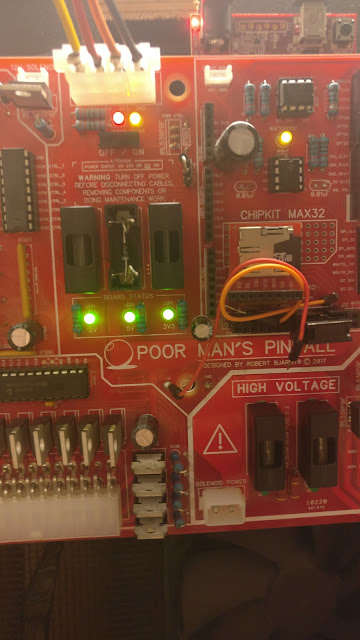So, I decided to fix the power rails.
First I removed the old fuses....
...built a board to host all three PSU's.
Yes, three. The scratches on the 12V line is me severing that line to allow me to use a 24V PSU instead of 12V. This line also provided power to the Chipkit, so Chipkit got its own jack now too. Real pinball machines strobe their light matrix with 18V, so 24V should provide more vibrant lights and flashers.
Black is the new ...black, baby!

Prepared the little power circuit....
And removed / accidentally messed the traces when removing a capacitor (more about that later)...
....but finally got everything in place!
Nice! Looking almost as if was part of the plan.
The board lights up!
But, did it work?
Of course not.
It's infuriating and fascinating how something can be tested and tested again, and work perfectly in a controlled environment - and yet fail miserably in the real world. Even when loosing my cool and removing a few of the caps (and doing a hack-job at it too....) it wouldn't work.
So here's Mr Cable once again. At least it's before the fuse this time, although I'm not sure that'll help.
The big downside is that I cannot start the PSU after I've inserted the USB-cable, so I have to power up the machine/board - then - plug in the USB-cable, or only use the USB-cable.

To be fair, it does work without the extra cable - eventually. After a few attempts and the power has stabilized it's possible to re-init the IC's that fail and they'll work. But it's highly unreliable and even when removing the 5V fuse, the LED still lights up, so power is sourced from somewhere. I don't really know where the power creeping is coming from - it feels unsettling to leave it without the extra cable.
Anyhow, win some, lose some. Story of this build. :)



























